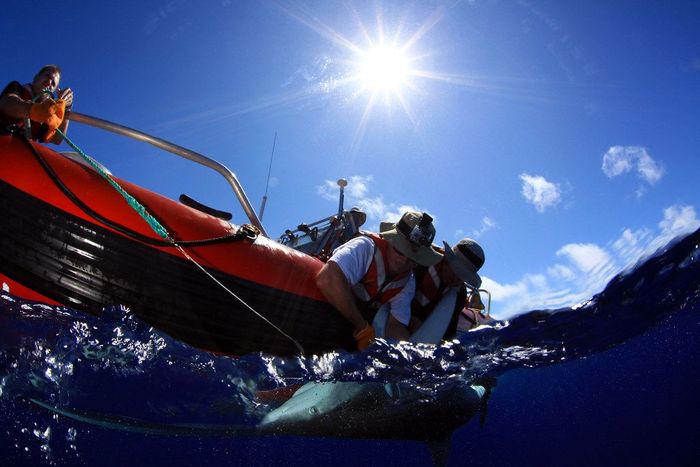Which Sharks Had the Most Attacks in 2020?
Shark Week is coming up! Ever wondered how many shark attacks happened in 2020? Here's a roundup of last year's shark attacks.

Ever since the movie Jaws came out in 1975, the public has developed a negative image of sharks. The movie and subsequent media often presented sharks as remorseless and unstoppable apex predators with a taste for human flesh lurking beneath the waves. This stereotype has led to people fearing sharks for no good reason at all. Because of this, it became difficult to promote shark conservation efforts.
Although much of these fears are baseless, there’s still a grain of truth within them. Sharks may not actively hunt humans, but it’s still not wise to attract their attention. Sharks such as the great white and bull sharks are capable of seriously injuring, and even killing, humans. When encountering these creatures, great caution is advised.
Although this article is supposed to talk about which sharks attacked humans the most last year, it is very difficult to identify which shark attacked a person. This is because most people who were attacked weren’t familiar with the differences between shark species and just assumed their attacker. But we have included here the reasons why sharks attack humans, as well as statistics on the number of shark attacks in the world last year. We also have advice from experts on how to avoid shark attacks.


Why Do Sharks Attack Humans?
Why do sharks attack humans in the first place? Sharks may be animals, but they don’t just wantonly attack humans. Humans aren’t aquatic creatures, so sharks attack them because they may have been curious or they felt threatened by the human’s presence. Sharks have a lot more to fear of humans than vice versa, as humans prey on sharks for meat and leather. Humans are a greater danger to sharks than sharks are to humans. Shark attacks on humans could be divided into two types: unprovoked and provoked.
The first instance is called an unprovoked attack. As its name suggests, these are shark attacks that occur without a live human doing anything to threaten the shark. This could be because the human unknowingly ventured into shark waters, and the shark mistook humans as prey and attacked them. These are the most common instances of shark attacks, as sharks don’t actively seek out humans as food.
The other form of attack is provoked attacks. These are attacks where humans were the ones who instigated the encounter with the sharks. It may first sound silly to you, what with their negative reputation and all, but some people actively seek out sharks. These could be anglers looking for an exotic catch to daredevils who want to experience being close to a live shark themselves. These are far less common, as humans and sharks don’t interact with each other.
Which Sharks are Responsible for the Attacks?
Because shark attack victims are often not in a proper state of mind to assess which shark is attacking them, they can’t give an accurate, detailed description of which shark attacked them. Because of this, they usually associate their attackers with a commonly known shark such as a great white, tiger, or hammerhead shark. This makes listing an accurate table of which sharks attacked humans the most difficult as the victim could be mistaken on their description. So any list that lists the sharks with the most attacks in humans must be looked at with caution as the data could be erroneous or inaccurate.

The top three sharks that are most commonly associated with shark attacks are the great white, tiger, and bull sharks. This is because these species are some of the largest sharks in the water and could inflict severe injury to anyone they encounter. When looking at the statistics of overall attacks, the great white leads the statistics with 290 unprovoked attacks and 52 fatal unprovoked attacks, followed by the tiger shark with 97 unprovoked and 34 fatal unprovoked, and then by the bull shark with 92 unprovoked and 25 fatal unprovoked. As could be seen from these statistics, even the most dangerous sharks don’t kill as much as they’re purported to do by the media. And people can still survive when attacked by one if they know what to do and do it.

Actual Shark Attack Statistics
The International Shark Attack File has recorded 129 cases of shark-human interactions throughout the world last year. Of these cases, 57 were unprovoked attacks, while 39 were provoked attacks. In the 33 remaining cases, six were shark bites on either motorized or unmotorized boats, one involved a shark biting into an already dead body, and one case involved a diver in a public aquarium. Three cases were relegated to doubtful, as it wasn’t sure whether a shark was involved in the case. Six cases were indeed shark-human interactions, but the nature of such interactions wasn’t really clear so no assignment could be made yet. Finally, an additional 16 cases weren’t confirmed due to the ongoing pandemic.
Of the 57 recorded unprovoked attacks, the US had the highest number, with 33 confirmed cases. This is 19.5% lower than what was recorded in 2019, which was 41 cases. In these 33 cases, most of these came from Florida, with 16 cases. Next on the list is Hawaii with five cases, then California with four, North Carolina with three, and then one for Alabama. Out of the recorded cases, there were only three cases where the shark attack was fatal. The recorded fatal attacks occurred in Maine, California, and Hawaii.
How to Survive and Avoid Shark Attacks
Fortunately, despite their terrifying reputation, the number of shark attacks has been noticeably decreasing. And, as the numbers show you, most shark attacks are survivable, so long as you know how what to do when attacked by one. Here are some tips to help you in avoiding and surviving shark attacks:
1.Avoid swimming during the early morning or lat night in areas where sharks are known to swim. This ensures that you won’t be mistaken by sharks as fish.
2. Don’t bleed or pee in the water. Sharks hunt via their excellent sense of smell, and going into the water while you’re bleeding could attract sharks to your location.
3. Don’t Panic. I know this seems like common sense or is very difficult to do when face by a shark, but the last thing you want to do when approached by a shark is to thrashing and splashing in the water as this will attract the shark to continue approaching you.
4. Slowly back away from the shark when it approaches you. This ensures that you won’t attract the shark’s interest as well as maintaining distance between you and the shark.
5. Avoid swimming in river mouths as these are likely places where a shark could be swimming.




